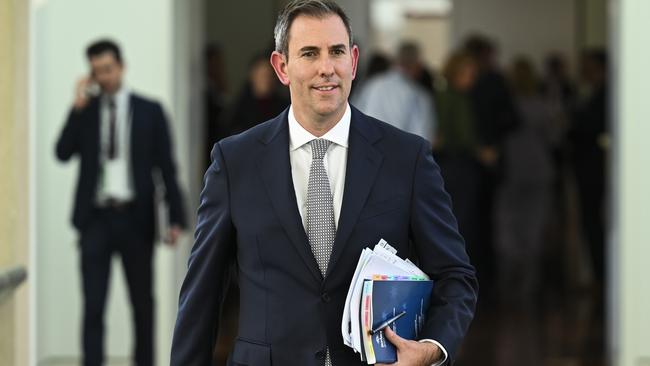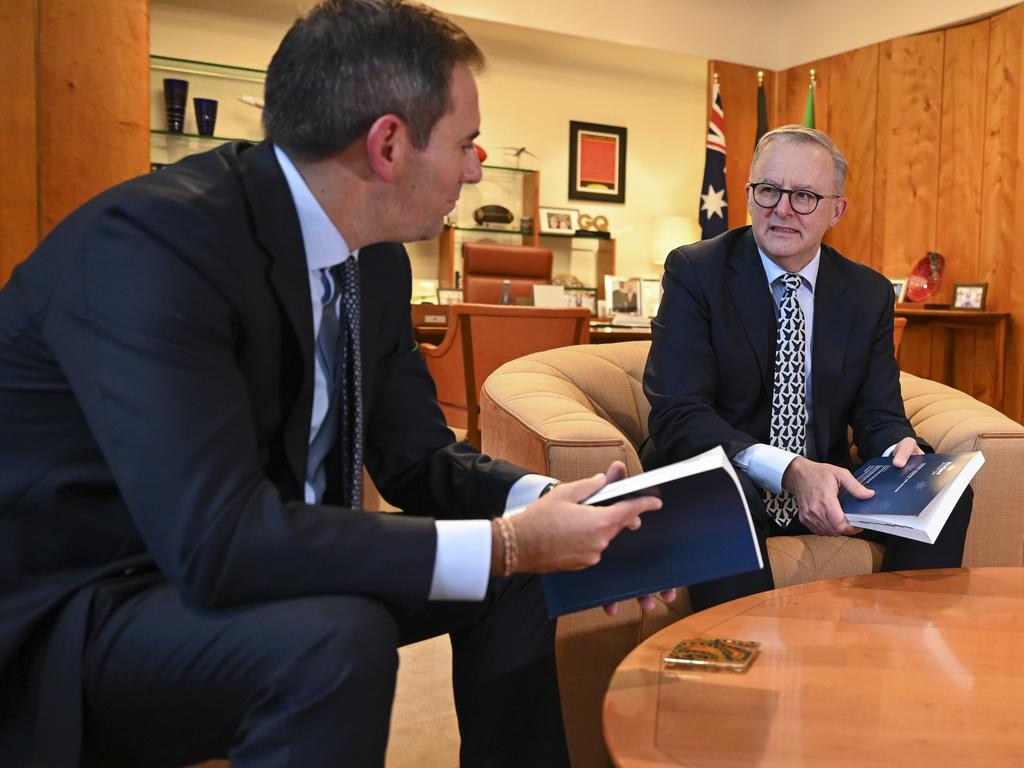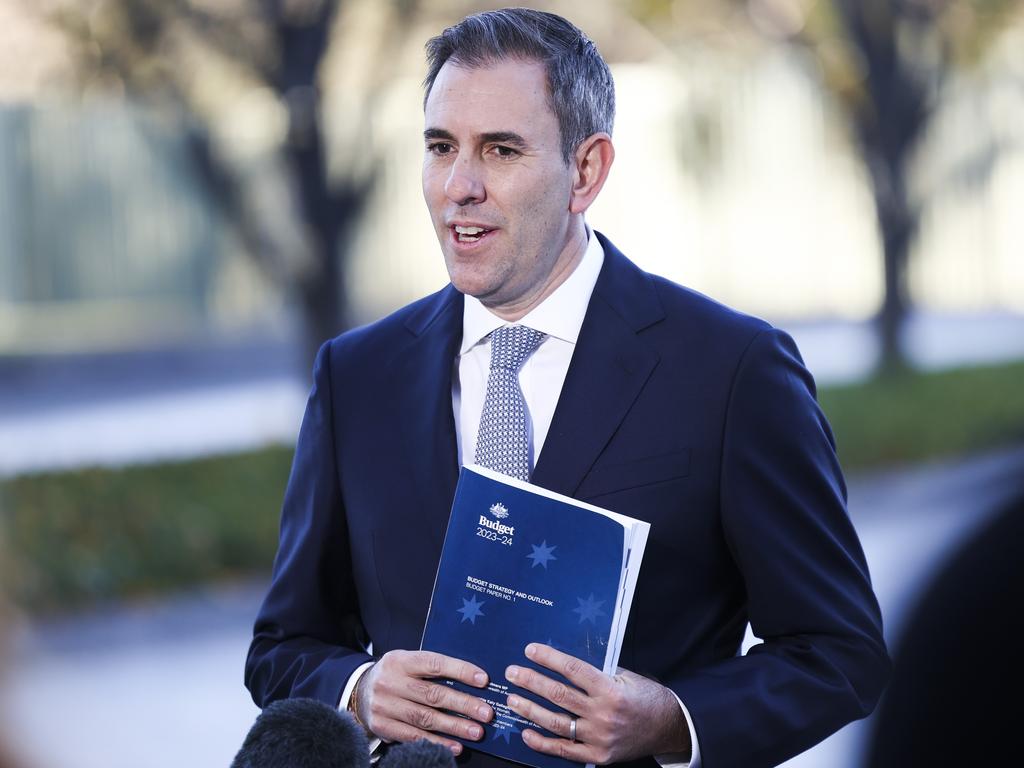Federal budget 2023: Surplus gone for another 10 years
Another balanced budget is at least a decade away, after Jim Chalmers unveiled a historic but short-lived $4.2bn surplus for this financial year.

Another balanced budget is at least a decade away, after Jim Chalmers unveiled a historic but short-lived $4.2bn surplus for this financial year.
A $126bn cumulative improvement in the Commonwealth’s underlying cash balance over the five years to 2026-27 was underpinned by a $114bn improvement in the forecast tax take, the budget papers show.
Almost 60 per cent of this tax windfall comes in this and the next financial year, reflecting the ongoing strength of the labour market, accelerating wages, and high commodity prices, before the tax-take falls from 2024-25 as these trends reverse.
The October budget predicted a $36.9bn deficit in 2022-23, meaning a $41bn improvement drove the nation’s first surplus since 2007-08.
The country’s finances would be back in the red by 2023-24, however, and while the predicted deficits were skinnier by a combined $110bn over the four years to 2026-27, they remained substantial.
The underlying deficit would be $13.9bn in 2023-24, the budget papers showed, before blowing out to $35.1bn in 2024-25, peaking at $36.6bn in 2025-26, and then shrinking a little to a deficit of $28.5bn in four years’ time.
The $146.5bn budget bonus from higher revenue and lower- than-expected payments over the five years would be offset by $20.6bn in new policy decisions taken by the government since October, front-loaded with $12bn in the next financial year.
Allowing 86 per cent of this windfall drop to the bottom line has translated into lower borrowing, less debt, and lower interest payments of $83bn over the coming decade, the budget papers show.
Net debt at $665bn by mid-2026 is about $100bn lower than forecast in the October budget, peaking at about 24 per cent of GDP through the forward estimates, instead of 29 per cent.
While Tuesday night’s budget does not predict another surplus in its “medium-term” projections out to 2033-34, the 2 per cent structural deficit identified in October – equivalent to $50-60bn – has virtually disappeared in the latest figures, dropping to just 0.2 per cent as a share of the economy.
Higher tax receipts from a larger workforce combined with a much lighter debt servicing burden and a dramatic slowdown in the rate of growth in the cost of the NDIS versus October underpinned the major improvement in the nation’s long-term financial position.
Interest payments would grow by 8.8 per cent a year on average over the decade, instead of by 14.4 per cent. The government’s 8 per cent cost growth target for the NDIS by 2026 have been assimilated into the budget assumptions, and the projected yearly growth drops from 13.8 per cent in October to 10.4 per cent in the latest budget.
Treasurer Jim Chalmers said: “We’ve made really good progress here but the job isn’t finished.
“The progress that we’ve made now, this is, in dollar terms, the biggest budget turnaround on record. And everyone will say, OK, you’ve got an upward surge in revenue and we did, we got that from stronger wages growth, lower unemployment, better prices for our exports. But it matters what you do with it,” he said.
“And (John) Howard and (Peter) Costello stood here in budget days and ’fessed up they would only save 30 per cent of it. My predecessors came here and on average they saved 40 per cent of it. (Finance Minister) Katy (Gallagher) and I saved 87 per cent. That’s the reason why the budget is so much substantially stronger.”








To join the conversation, please log in. Don't have an account? Register
Join the conversation, you are commenting as Logout